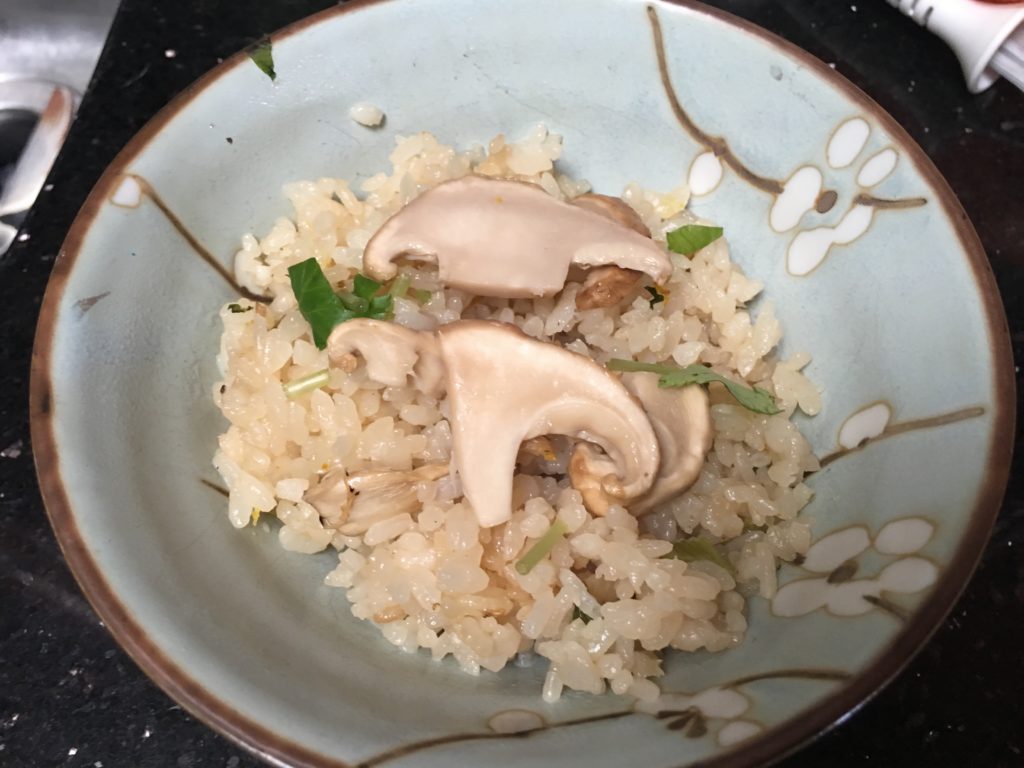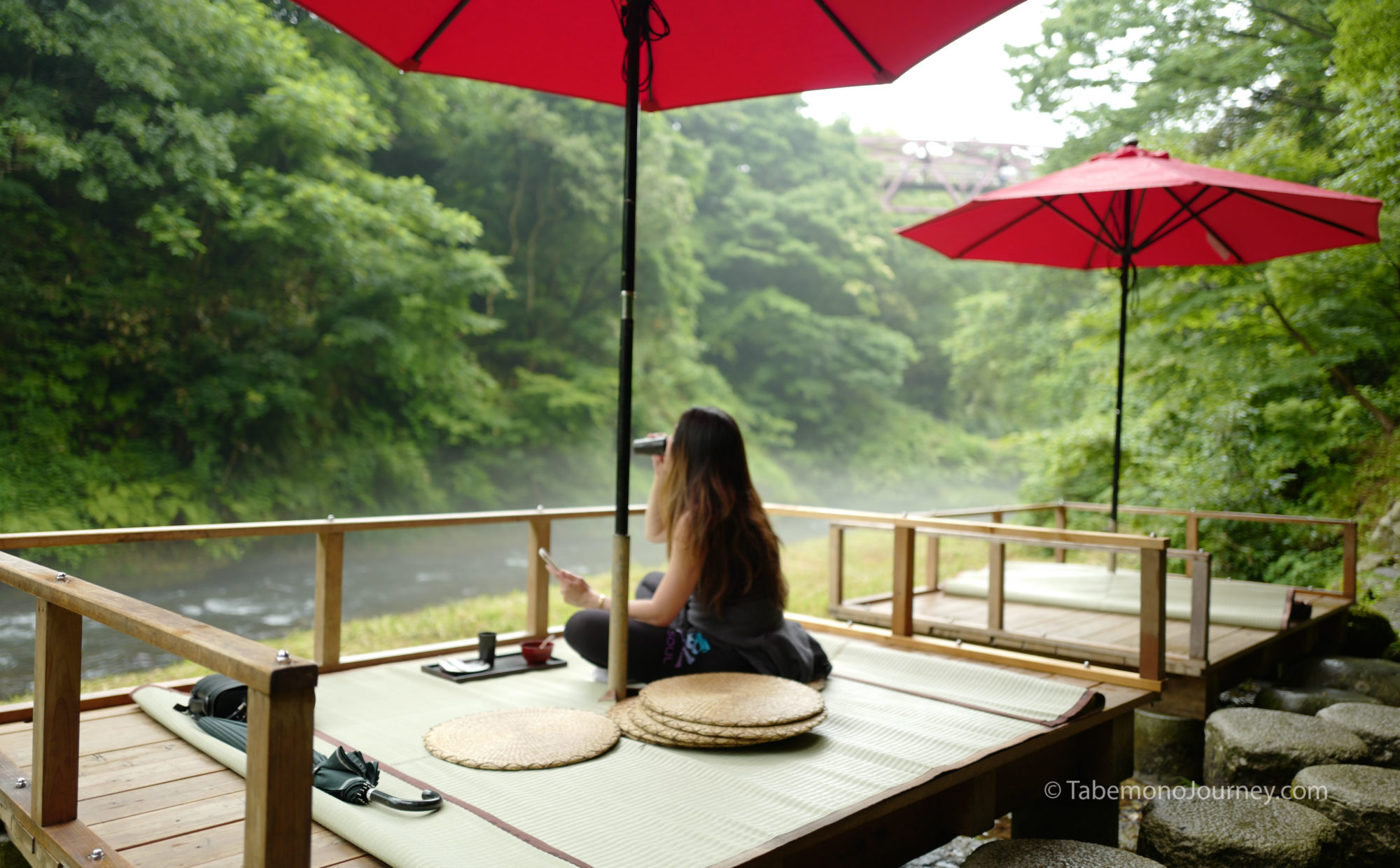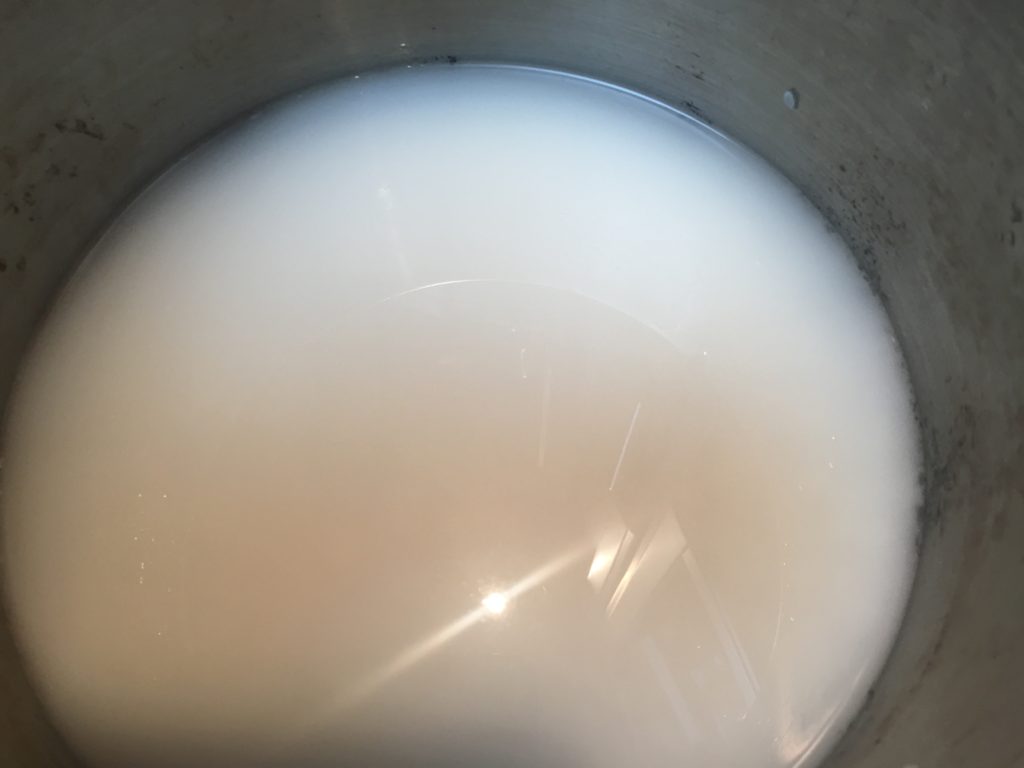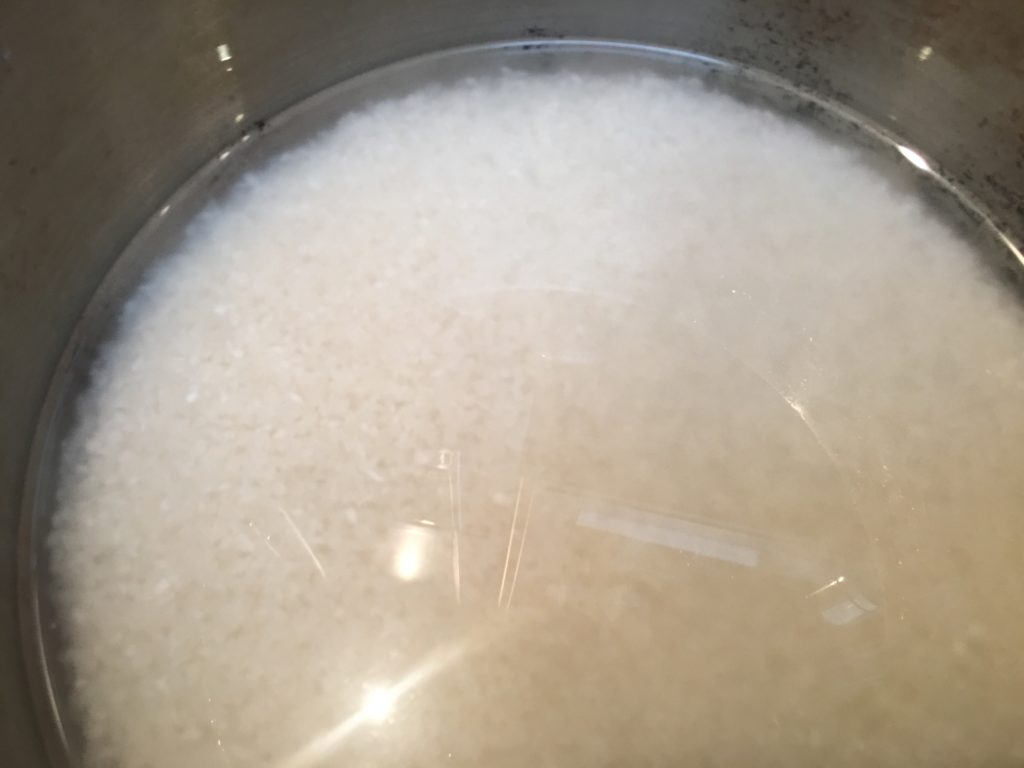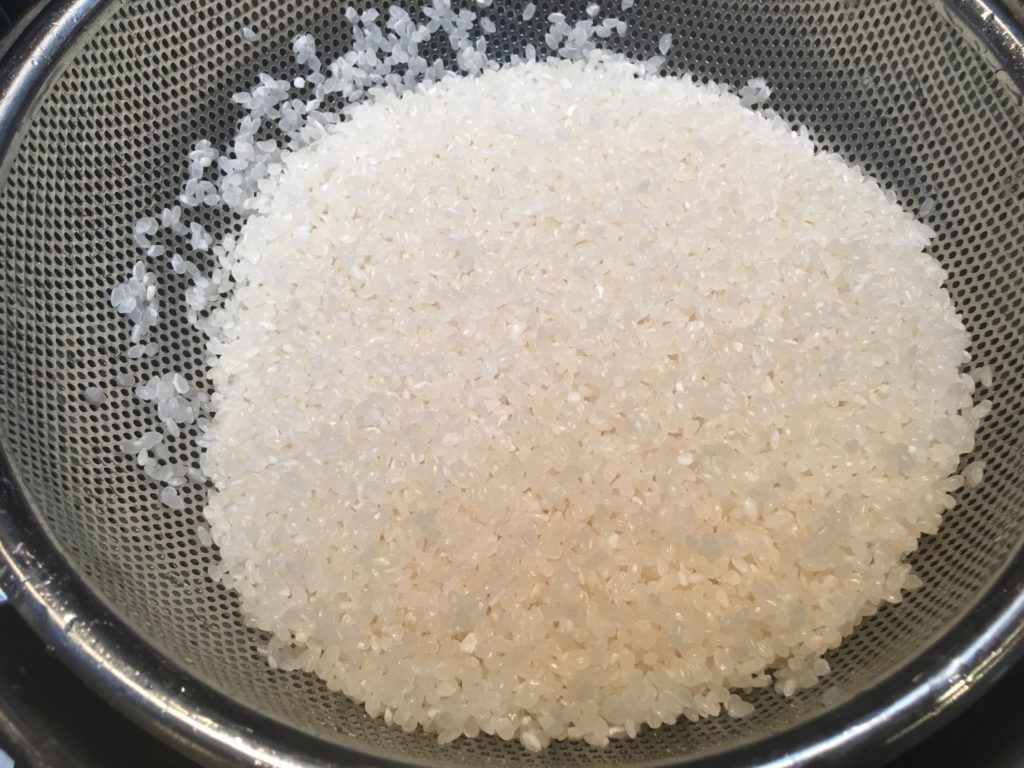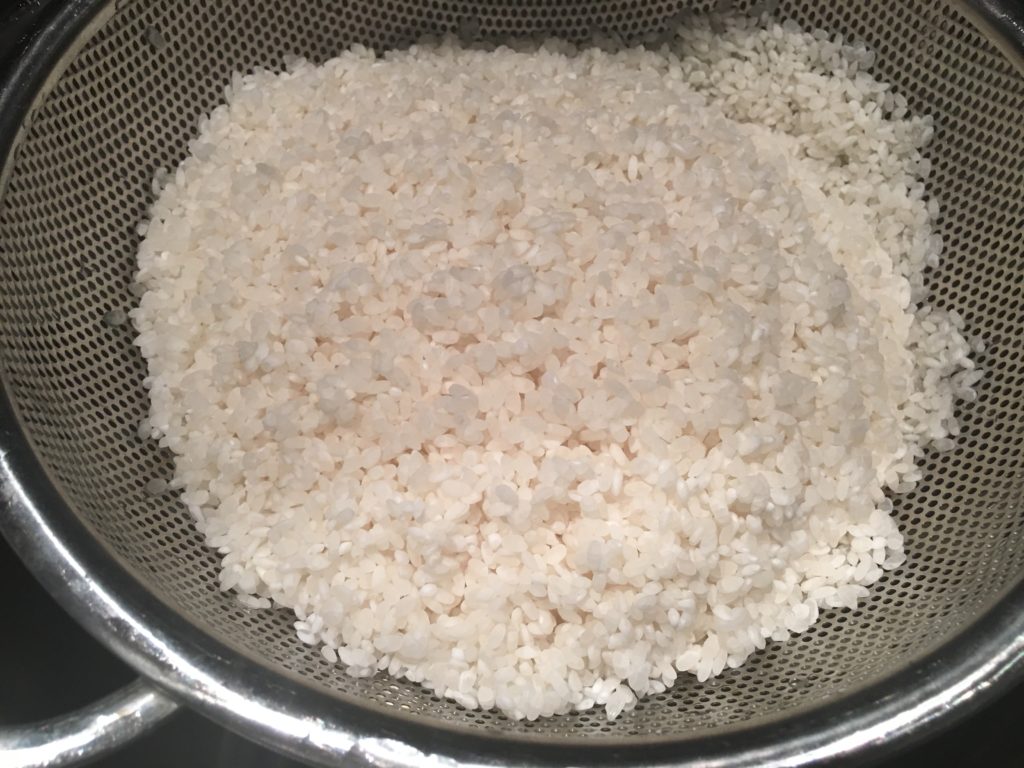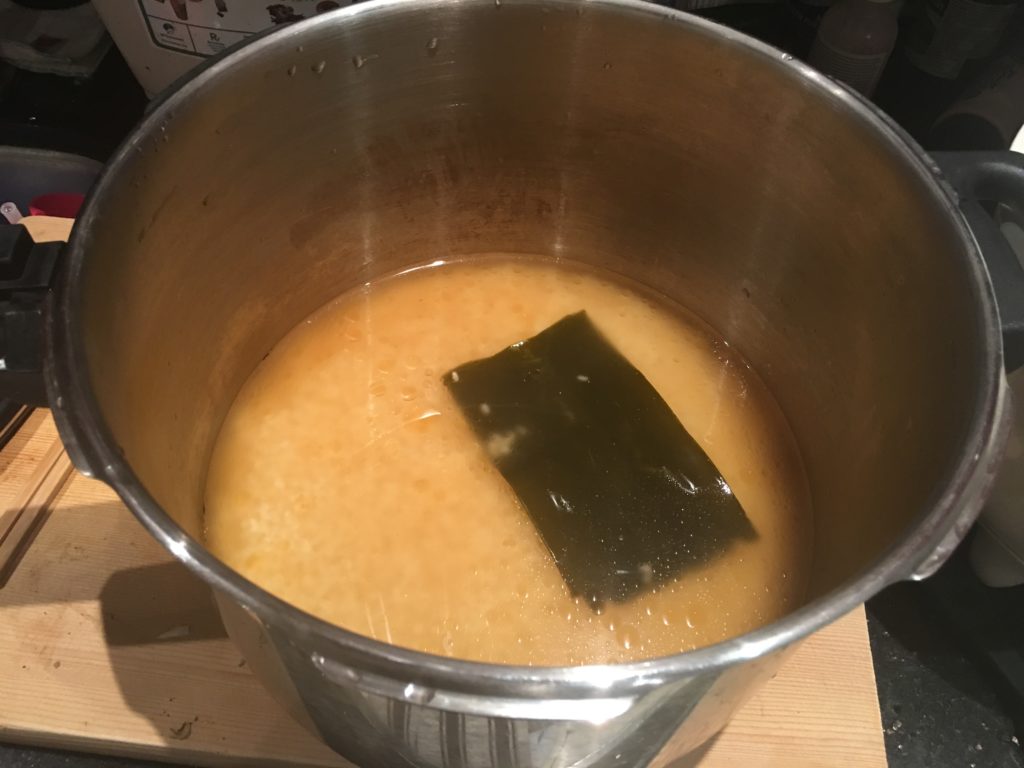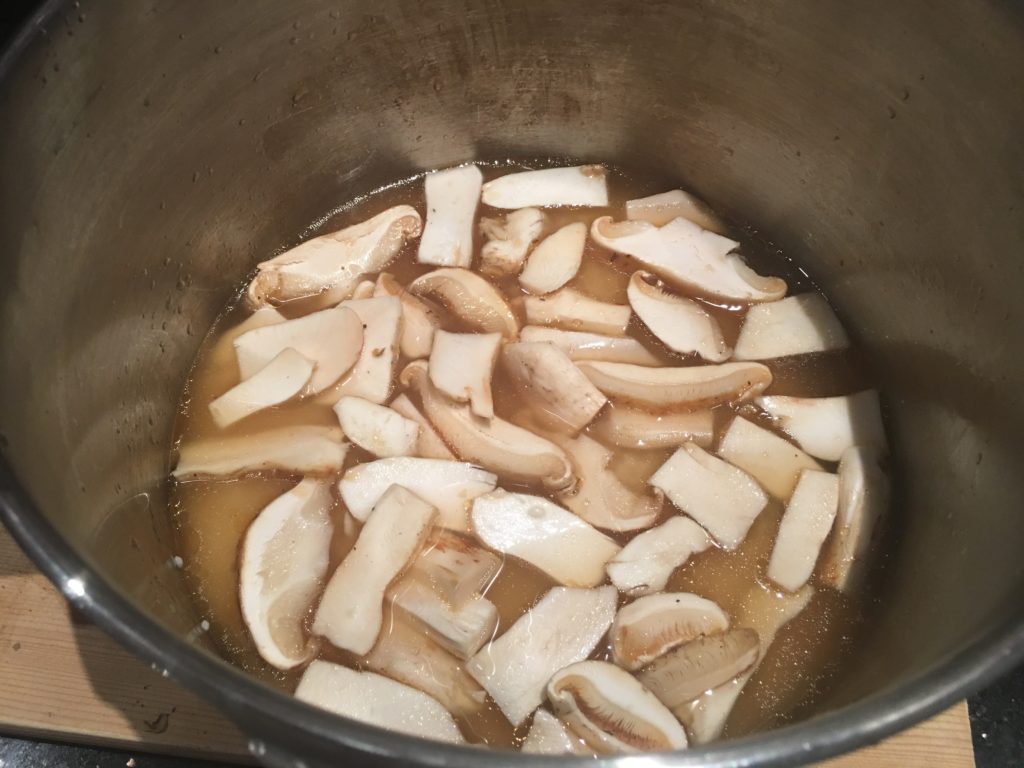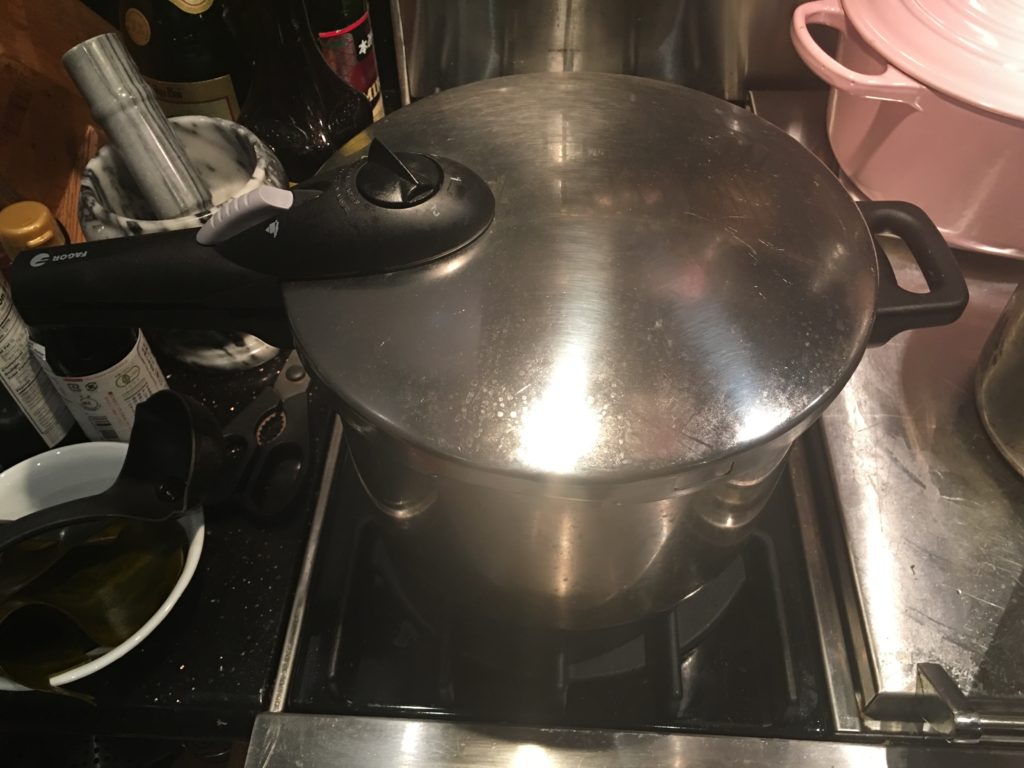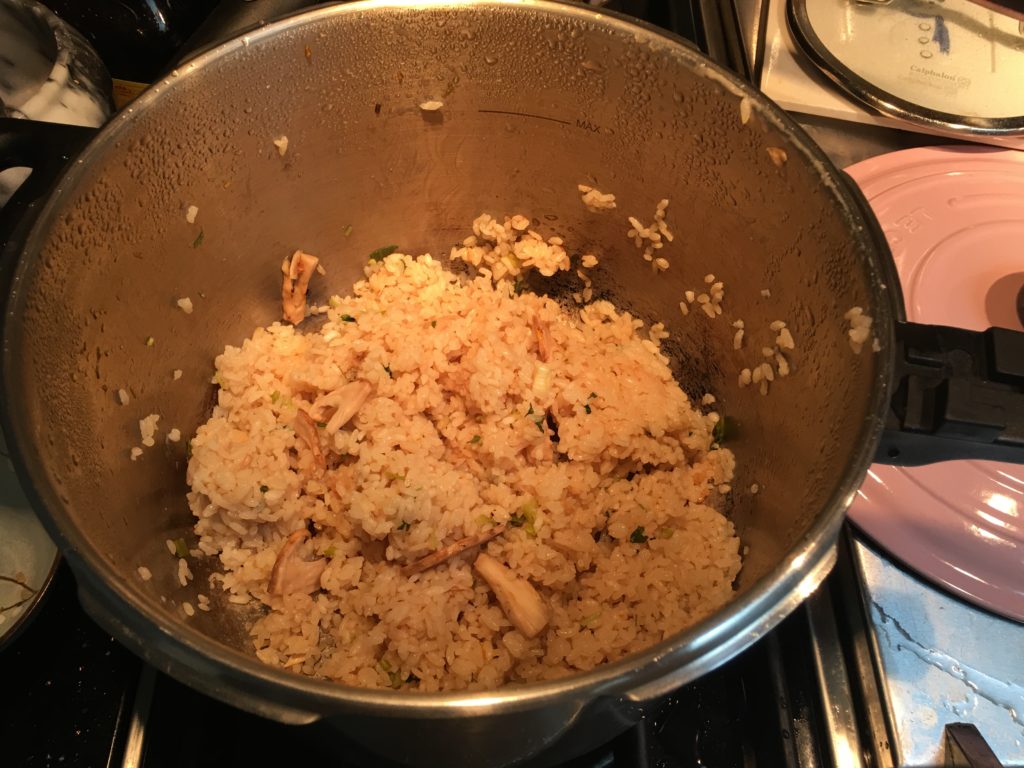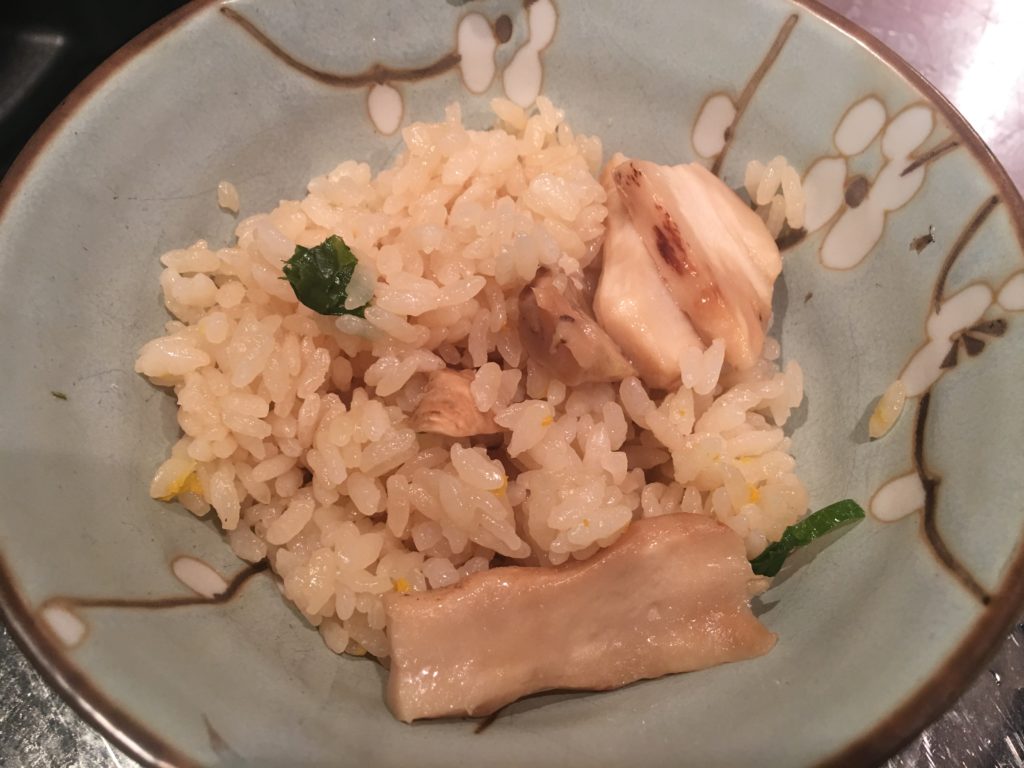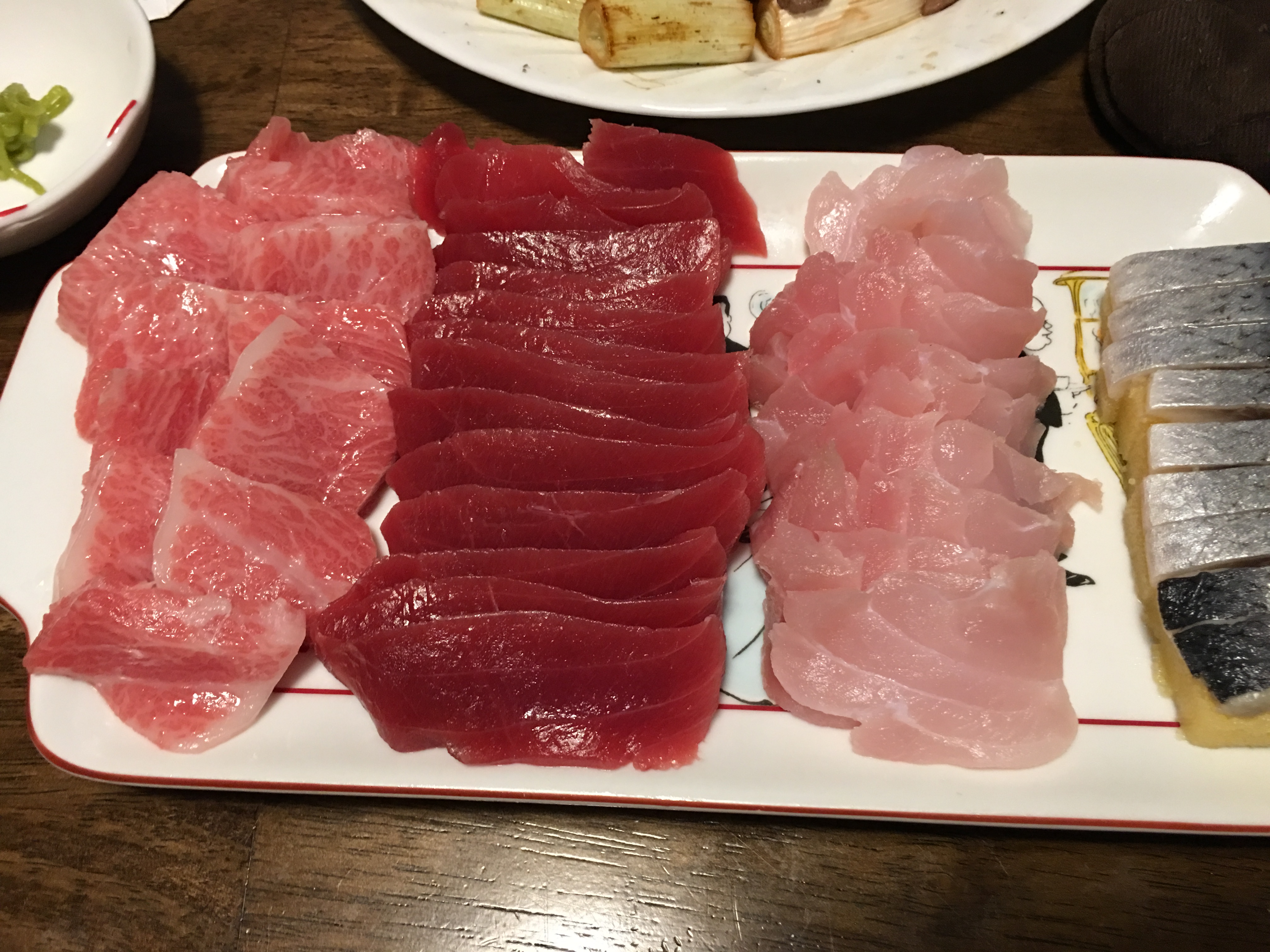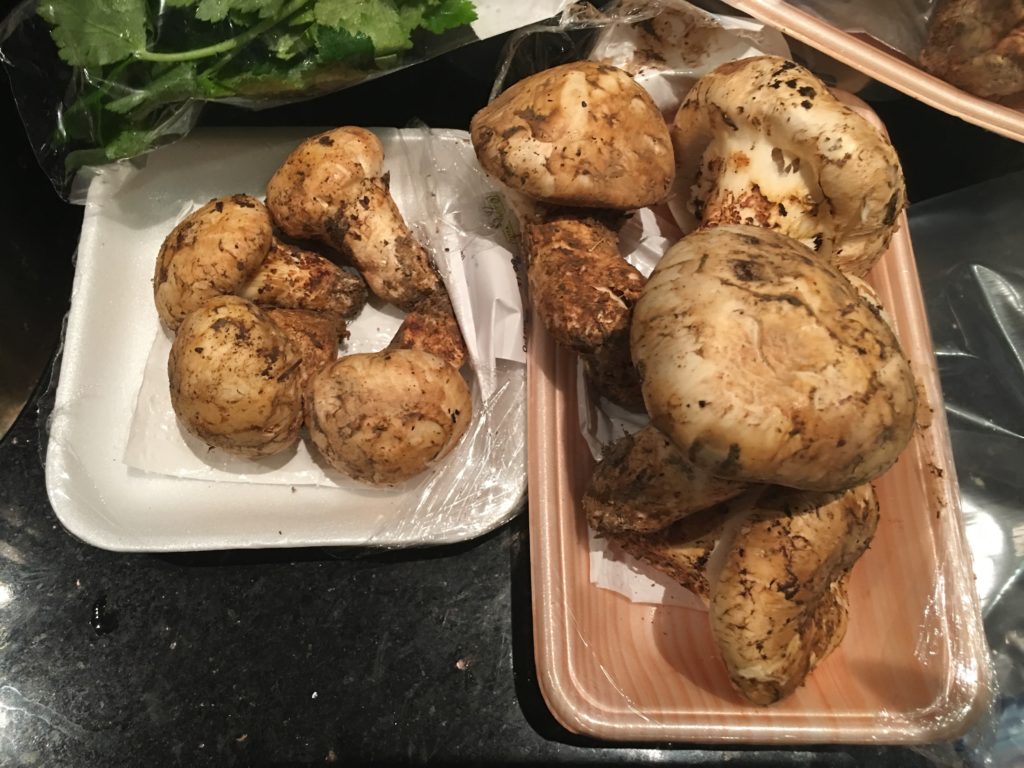
While shopping at my local Japanese grocery store during the autumn months, I spotted matsutake mushrooms on several occasions and have been enjoying this delicacy. It is my favorite mushroom as it has a distinctive yet pleasant aroma of pine trees and cedar. It is usually available from September to January, and are harvested by hand, hence its high price ranging from $15/lb to $50/lb, depending on its grade. Since I was making dinner that night, I really wanted to showcase this amazing ingredient and decided to make matsutake gohan(rice) in the takikomi style with a stove top pressure cooker as it’s faster than a regular rice cooker. Takikomi is a rice dish that is cooked with vegetables, seafood, meats, or in this case mushrooms and is usually cooked with dashi and a soy sauce mix instead of plain water.
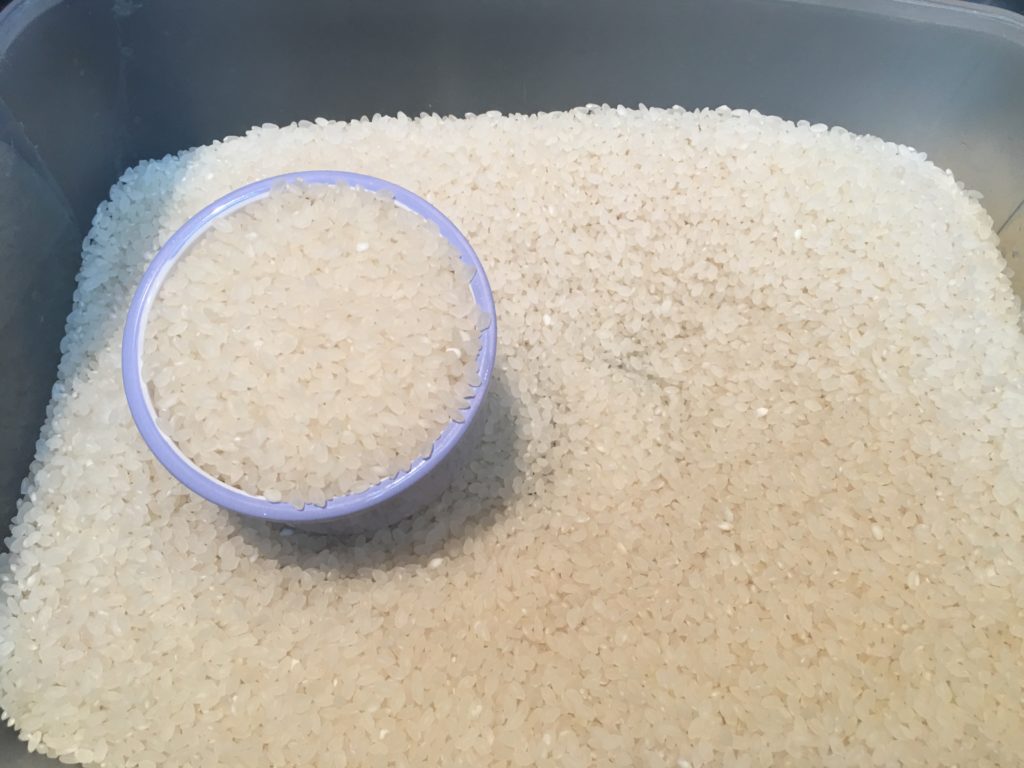
For the rice, I paired the matsutake with a bag of shin-mai (new harvest rice) from Iwate prefecture that I also bought in the autumn months. Shin-mai is another ingredient in Japan that is available only in autumn. Since it is collected from new crop, it has a higher moisture content than the typical older rice sold. The result is a subtle difference from aged rice as it is a little more plump and a little more moist than regular older rice. Additionally, the rice I bought is of the koshihikari strain, which is my favorite short grain. It is used in a lot of high-end sushi restaurants in Japan, and prized for its pearl like color, sticky yet firm texture and natural sweetness.
Since I was making a dinner for our family of 6, I made a big batch. I’m not much of a recipe writer and usually go by feel and taste, but here’s a rough outline of the ingredients and approximately how much I used:
- 4 cups of rice
- 5 medium sized Matsutake Mushrooms
- piece of kombu (about 2×3 inch)
- 1/2 teaspoon of sesame oil
- 4 cups of liquid made of the following:
-
- 3 cups of dashi
- last cup is a mix of 4T Sake, 3T Mirin, and 3T Soy sauce, then topped with dashi
-
- Chopped mitsuba (Japanese parsley-like herb)
- Zest of fresh yuzu (Japanese citrus)
The first thing to do is measure out 4 cups of rice and wash the rice. This is important as most Japanese short gain, and especially koshihikari is very starchy. I use a circular motion.
The water gets pretty cloudy so I drain the water and repeat 4-5x. You’ll see after look almost like milk the first couple of times.
After 4 to 5 washes, the water is less cloudy and you are not after it to be completely clear. More like the below picture.
Next you’ll want to put the rice in a colander to let the excess water drain. I usually let it drain for about 15 minutes as you will want to have a 1:1 ratio of rice to water. In the meantime, it’s time to prepare the mushrooms.
Next you will want to clean and cut the matsutake. After cutting off the hard ends, I use a brush to clean out the dirt and in tough areas a peeler. After cleaning them, I like to cut the matsutake a little thick (about 1cm) as the mushrooms will shrink and I like to have meaty bites. 
Once the mushrooms are cleaned and cut, the rice should be strained and will turn from a opaque color to a white color.
It’s time to pour the rice into the pressure cooker and add the liquid. I would measure and pour in 3 cups of dashi. For the last cup of liquid, combine 4 tablespoon of sake, 3 tablespoon of mirin, and 3 tablespoon of soy sauce, then top the rest of the cup with dashi to make the final cup of liquid. Pour this as well into the pot.
I also add a piece of kombu to the pot and a dash of sesame seed oil as this helps the contents in the pressure cooker from fully bubbling. About a teaspoon full is more than enough.
Add the matsutake mushrooms into the pot. I like to push the kombu to the bottom of the pan as it may dehydrate if it breaks the surface tension of the liquid during the boiling process.
Cover up the pot and turn on the heat to high for 4 minutes then reduce to medium for 3 minutes for a total of 7 minutes on the stove.
After the total time of 7 minutes on flame, move the pressure cooker off the heat immediately and let it depressurize naturally. I actually leave it off the heat for 15-20 minutes total to let the rice finish cooking.
I was fortunate that my Japanese grocery store had fresh yuzu citrus. The juice of the yuzu is a pleasant cross between and grapefruit and tangerine and is very distinctive and almost floral like. However, the zest is even more aromatic and floral and will go perfectly with the rice. The juice will be saved for a soup and sunomono that I’ll make to pair with the rice.
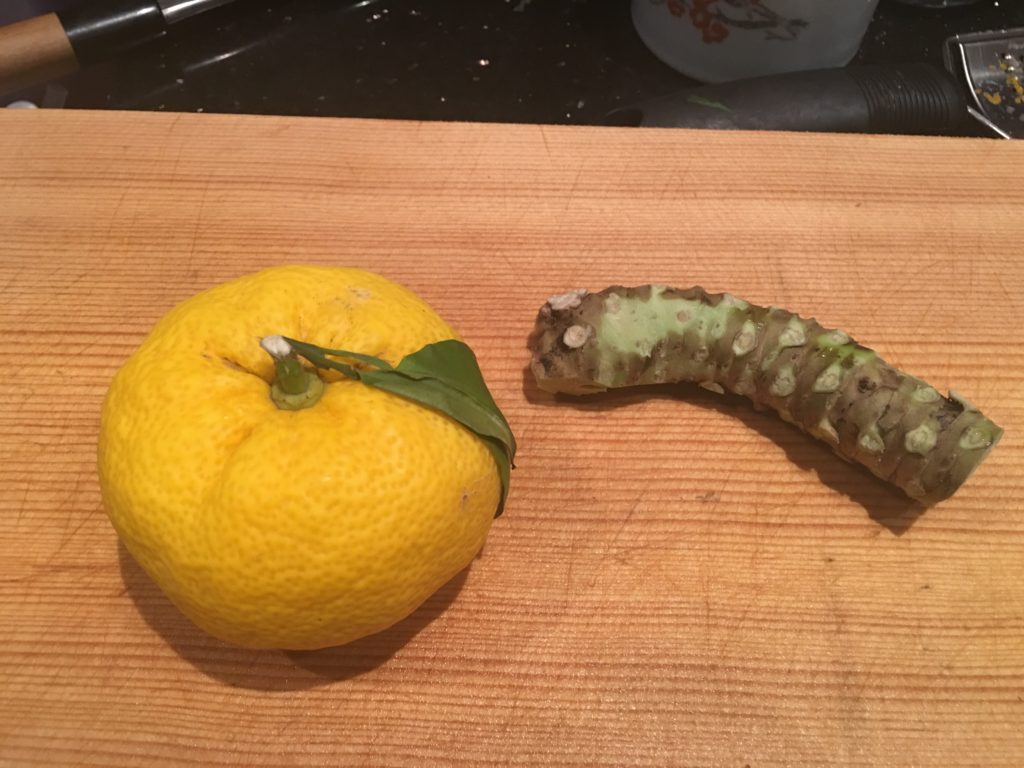
Once 15 minutes are up, I would open the pressure cooker and grate the zest of the yuzu into the rice.
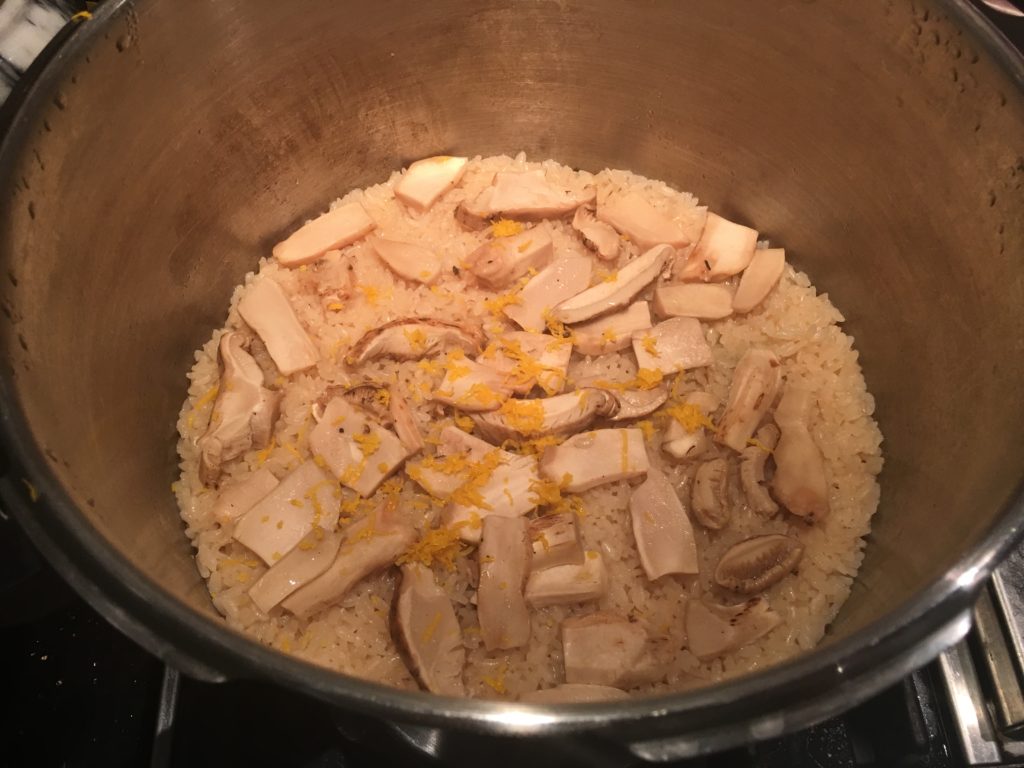
I also bought fresh mitsuba, which as a refreshing parsley and celery like taste. You can eat both the stem and leaves, which i chopped up and added to the rice.
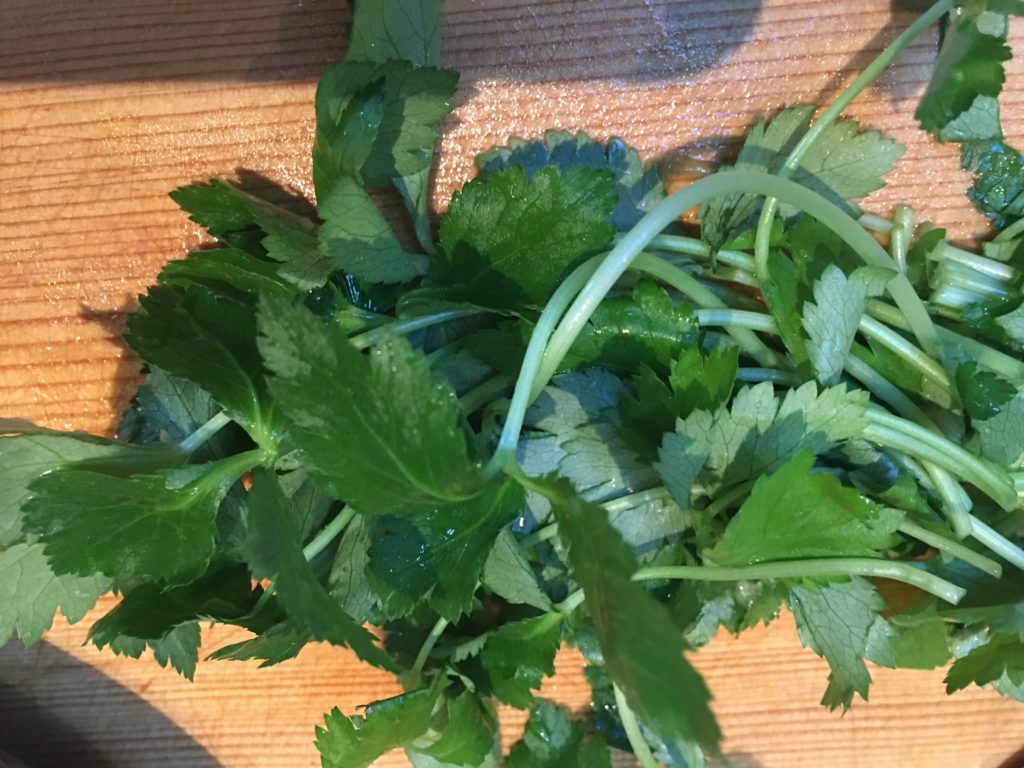
Next i would stir and mix up the rice in the pressure cooker pot.
Stir the rice in a motion that uses the “blade” of the rice scooper to cut and add air to the rice as you do not want to smash up the rice grains. Try to “fluff” up the rice in the pot.
The finish product. Note, if you don’t have yuzu or mitsuba, you can skip either or both and the rice will still taste great.
Since I really wanted the night to focus on matsutake gohan, I choose accompanying dishes that were clean tasting and not overpowering in flavor or spices. Since the store had fresh wasabi, I picked out some sushi grade fish and cut them up myself with my yanagiba. I also made tako sunomono, and matsutake dashi soup.
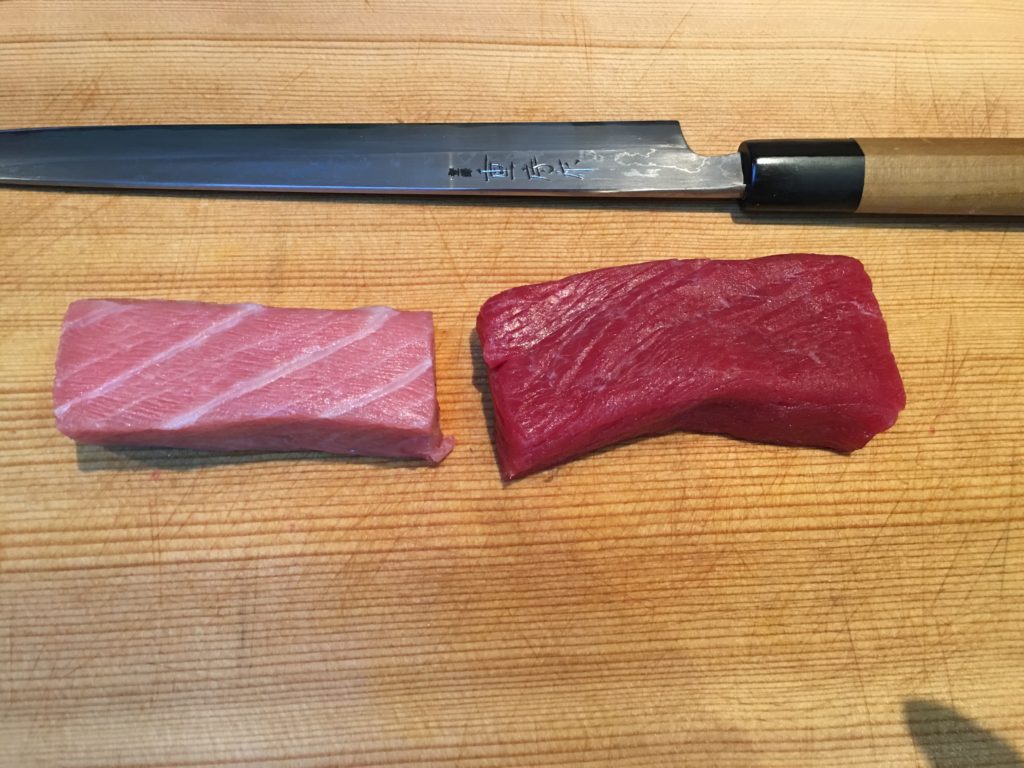
The finished product after slicing up the small block of fish. I bought blue fin toro, blue fin akami, tilefish, and herring with roe from the sashimi section as they all looked really good.
Fresh wasabi is a must when eating sashimi.
I used the fresh yuzu juice to make the dressing for the tako sunomono.
 Also made matsutake dashi soup with some shimeji mushroom and bamboo shoots. I added some of the yuzu juice, bit of yuzu zest, and some mitsuba to add a little bit of flavoring to the soup.
Also made matsutake dashi soup with some shimeji mushroom and bamboo shoots. I added some of the yuzu juice, bit of yuzu zest, and some mitsuba to add a little bit of flavoring to the soup.
As it is currently the end of December, it is also nearing the end of the season for matsutake, but you may be able to find some of the late harvest at the grocery store as I have seen them in up to early January in the past. One last look at the another bowl of the matsutake gohan as most likely I will have to wait until next autumn to taste this wonderful mushroom.
